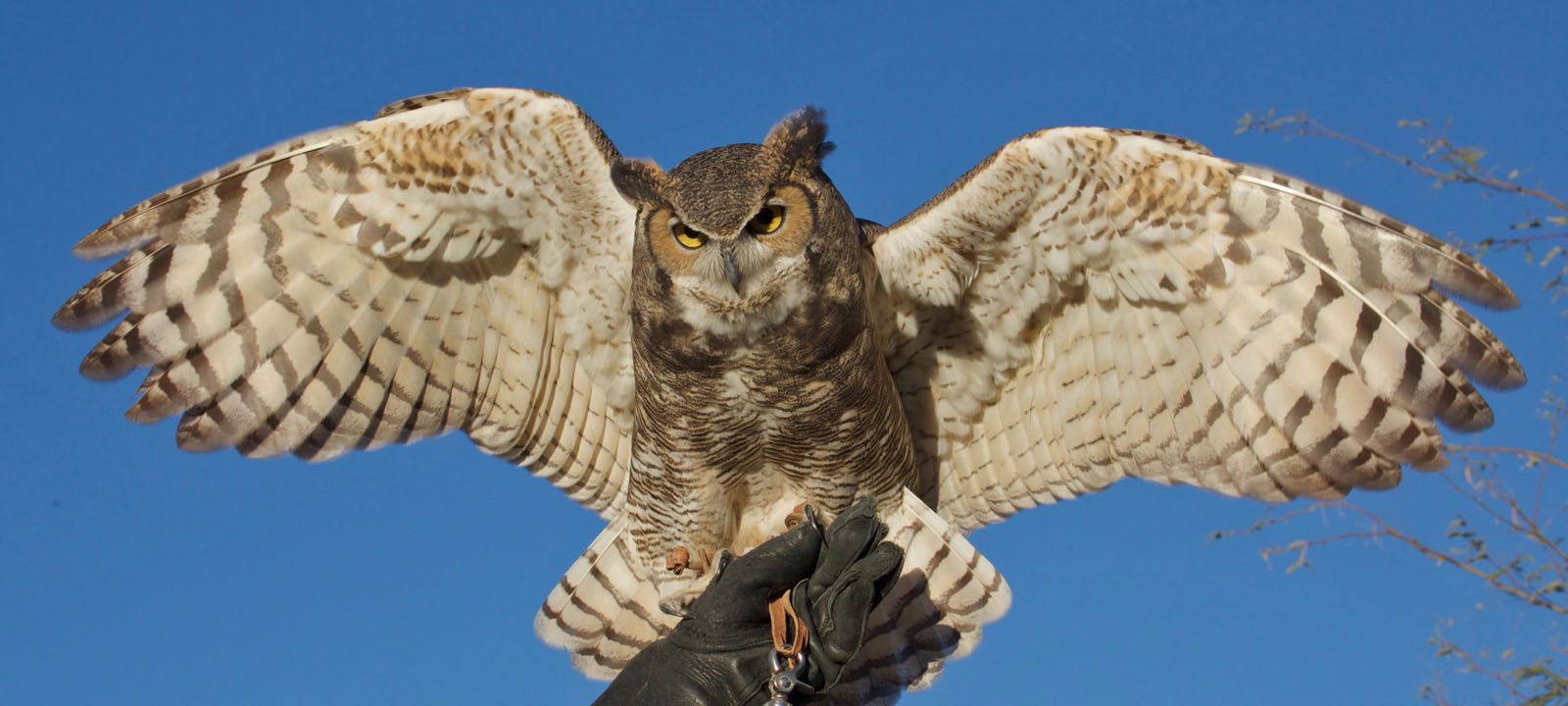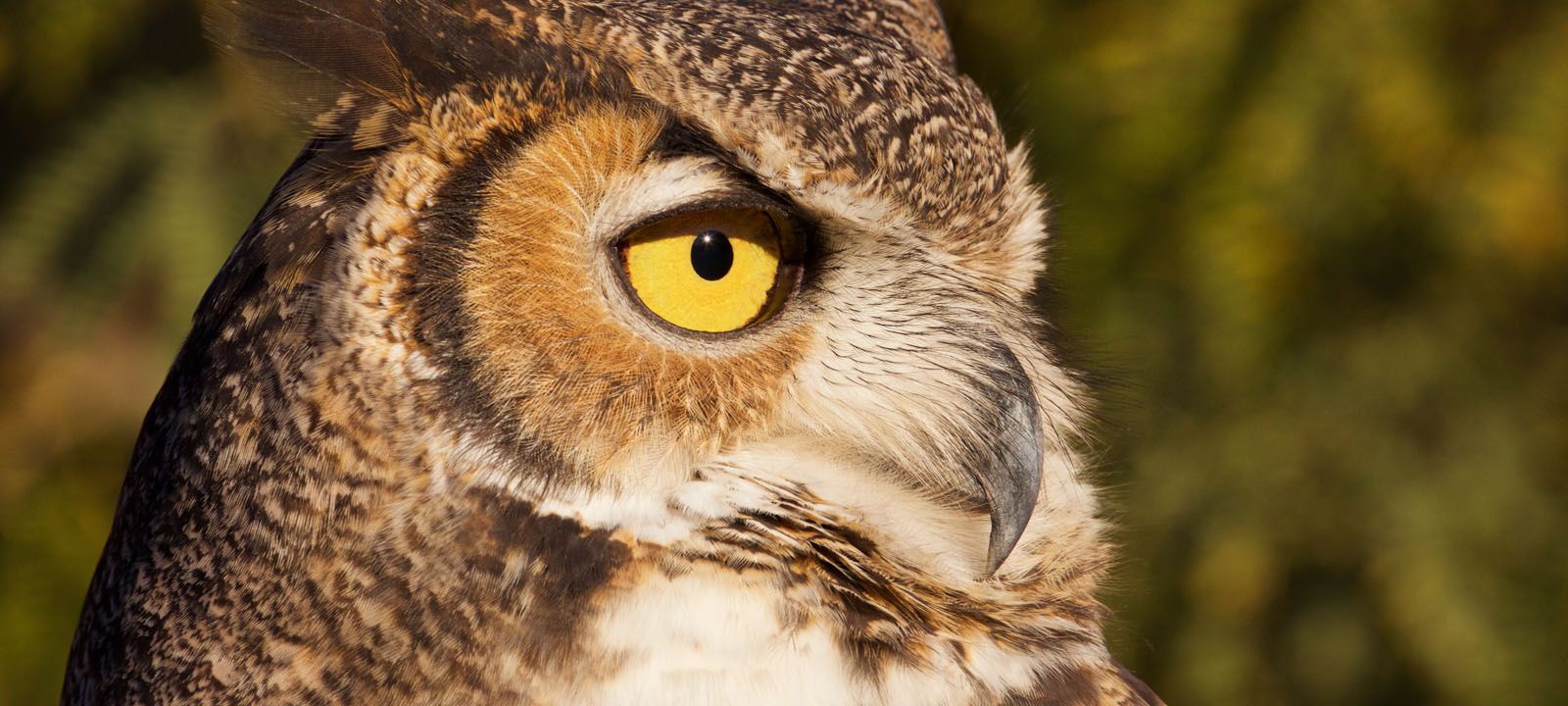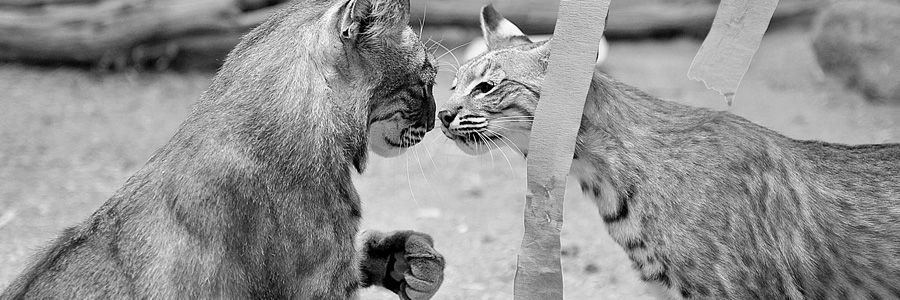OWL

Common Barn Owl, Tyto alba
- Habitat: Barn owls often gravitate toward open areas, like prairies or farmlands, but can be found in a wide variety of habitats, including developed urban areas
- Status: Least concern
- Population Trend: Stable
- Diet: Rodents and other small mammals - predominantly voles, mice and shrews - and very occasionally bats, small birds, amphibians and invertebrates
- Weight: 8 oz - 25 oz
- Size: 13" - 15" long; 31" - 37" wingspan
- Lifespan: 2 - 4 years in the wild; up to 25 years in human care
- Interesting Facts:
- Barn Owls make eerie screeching and hissing noises.
- Barn Owl is silent in flight due to soft fringe-edged feathers that don't "swoosh" as they move.
- Barn Owls can hear a mouse's heartbeat in a 30 square foot room!
Great Horned Owl, Bubo virginianus
- Habitat: Found throughout North America, including sub-tundra, woodlands, fields, rain forests, and both rural and urban areas.
- Status: Least concern
- Population Trend: Stable
- Diet: These carnivorous birds eat rodents, rabbits, birds, snakes, lizards, even skunks!
- Weight: 2 - 5 lbs.
- Height: 18" - 25" body; 3.3' - 4.8' wingspan
- Lifespan: 5 - 15 years in the wild; 20 - 30 years in human care
- Interesting facts:
- While humans have seven neck bones, owls possess 14. This allows them to turn their heads up to 270 degrees. Why do they need to turn their heads that far? Unlike humans, who can move their eyes side to side, and up and down, owls’ eyes are “fixed.” To look at something that isn't right in front of them, they must turn their whole head.
- Owls do not build their own nests; because they lay eggs earlier in the year than most other species, they use old raven and hawk nests to raise their young
- Great Horned Owls are the second largest owl in North America but the largest in Arizona.
THE SOUTHWEST WILDLIFE OWLS



